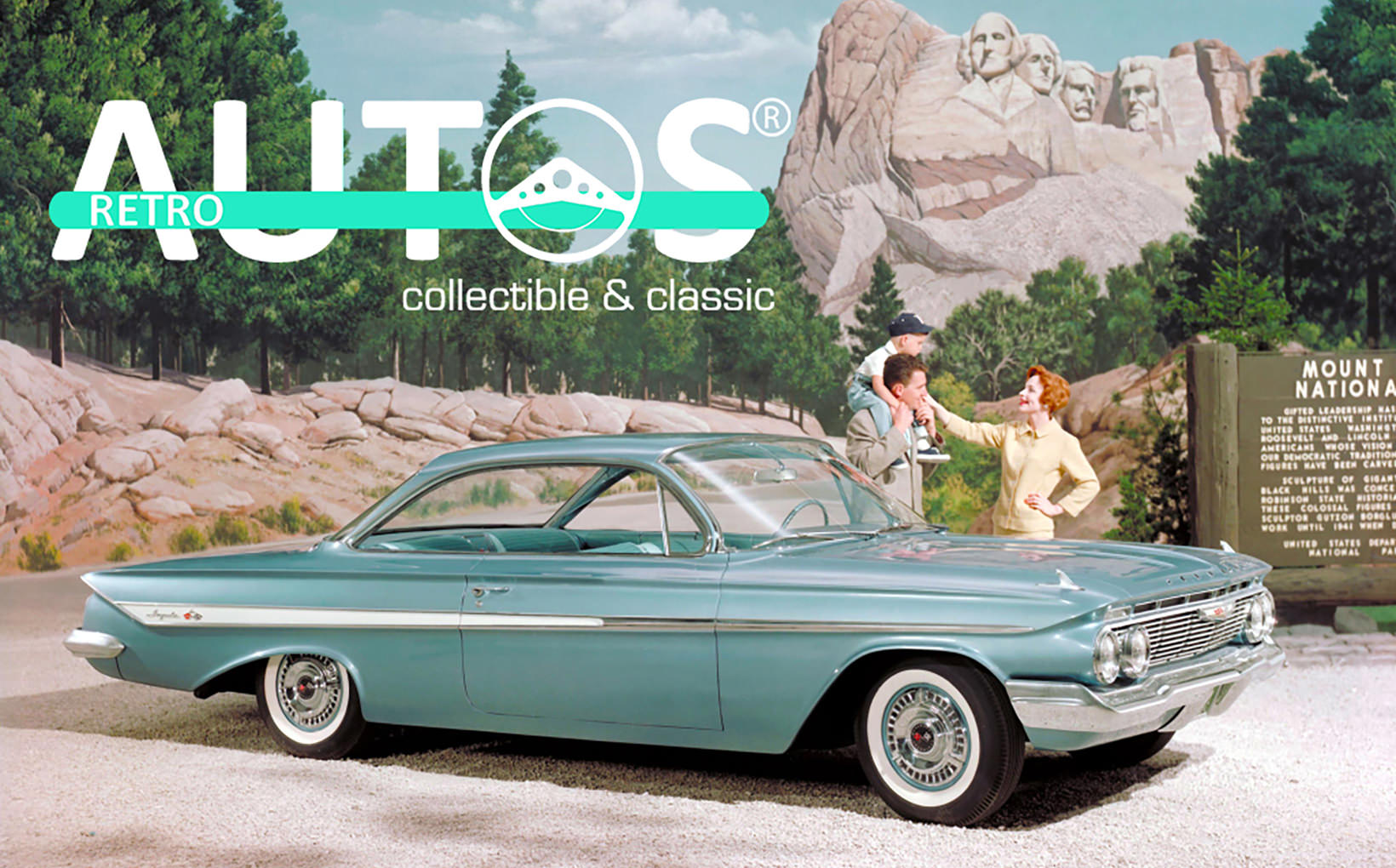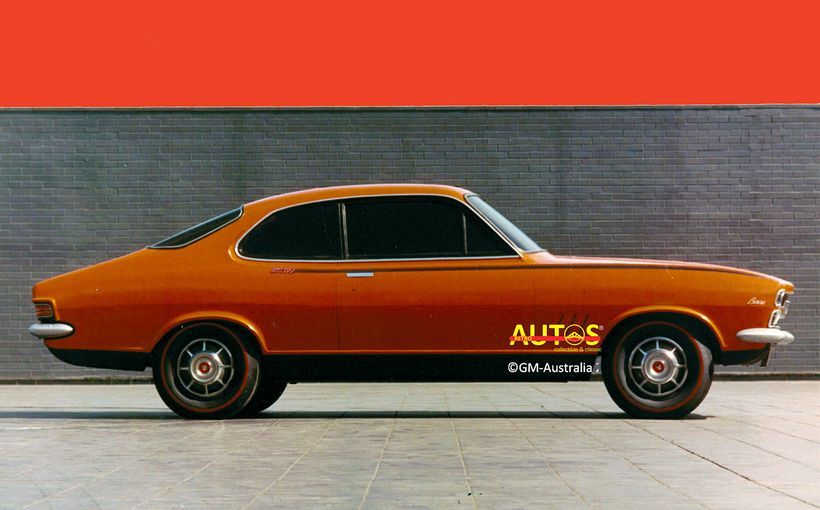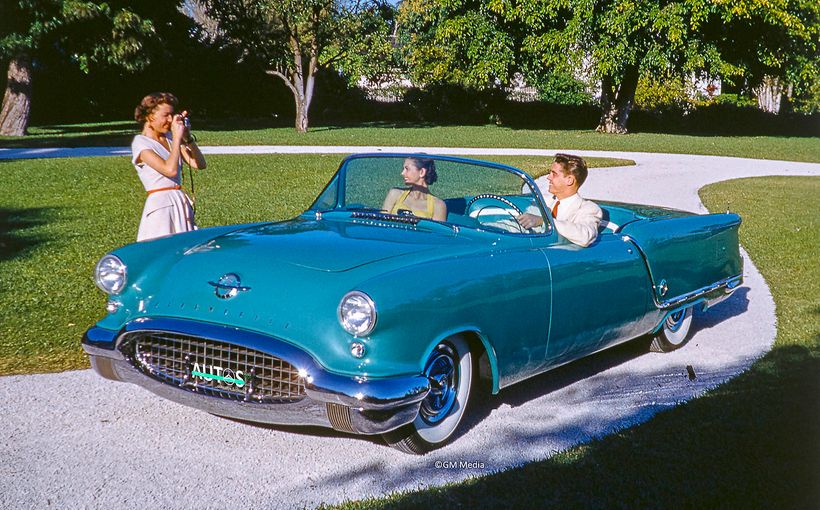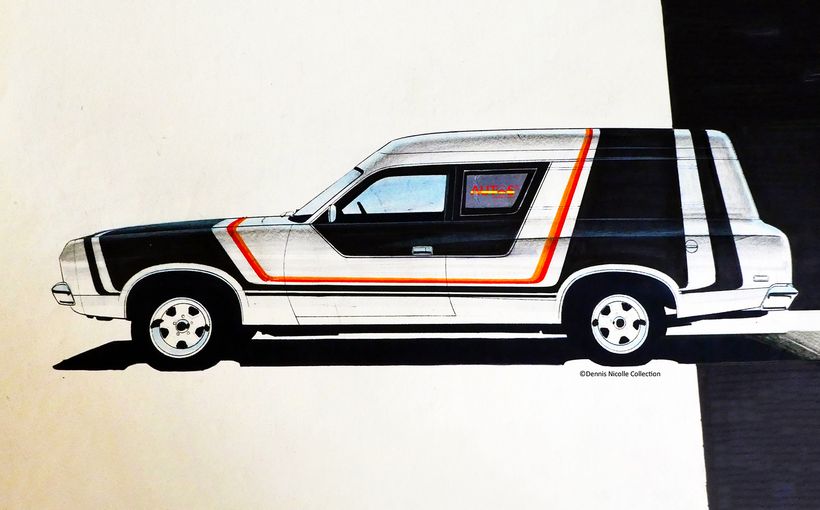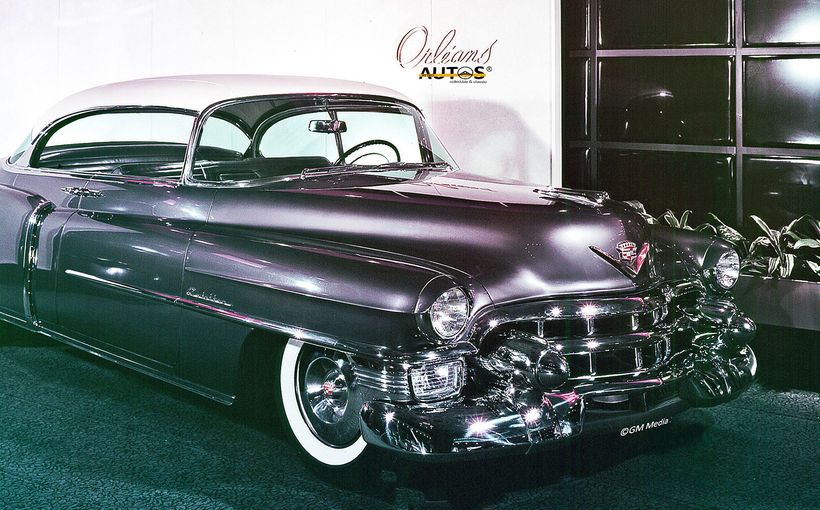
Without a doubt, 1961 was one of the most prolific years, maybe the most prolific, for totally new cars. In part one of this series, I celebrated cars from Europe. Part two continues the celebration, this time focusing on Japan and the USA.
In Japan, the first signs of its car making expertise were beginning to emerge. The learning curve was steep and success was elusive, at first.
Meanwhile, in the USA the pace of change was frantic. Both Ford and GM completely re-styled every one of their models except for the Corvette, Corvair and Falcon for 1961.
For Ford, this was the THIRD year in a row that they’d completely restyled their full-sized cars. In fact, since the beginning of 1957, there had been four complete re-styles of Ford and Mercury cars and the Edsel had come and gone.
At GM, it was also the FOURTH restyle of their full-size range since 1957.
It was a mammoth effort for both companies. The drain on financial, technical and people resources was almost overwhelming. Oh yes, 1961 was a BIG automotive year!
Hino Contessa
In 1953 Hino began making the Renault 4CV from imported knocked down kits. Both companies needed the arrangement. Like most of Japanese industry the company was in poor financial shape after WWII and Renault needed to earn much needed export cash.
By 1961 Hino had gained enough expertise to recast Renault 4CV in a locally designed body and give it an improved engine with increased power. The result was the Contessa.

Photo: © Toyota Motor Corporation.
Hino was acquired by Toyota in 1967 and its heritage story is told by Toyota on their official website. Here’s what it says about the Contessa: “Hino radically redesigned the body, giving the car an elegant styling that befitted its name (meaning "countess" in Italian)….the sporty compact car boasted excellent manoeuvrability and a smooth-running engine. In 1963, the car entered the inaugural Japan Grand Prix and took first place in the class.”


Photos: © Toyota Motor Corporation.
Toyota Publica
The Publica was Toyota’s effort to meet the Japanese government’s requirements for a low cost “national car”. Top speed had to exceed 100 km/h, weight was limited to 400kg and fuel consumption should not exceed 3 litres/100km.
The design team was led by Tasuo Hasegawa. Initially a front wheel drive proposal was developed but this proved too technically difficult for Toyota at the time. The result was an air cooled 697cc two-cylinder engine driving the rear wheels through a four-speed manual gearbox. Performance was not a strong point and neither was the Publica’s styling. Cute would be a generous description. Rudimentary would be more realistic.


Photos: © Toyota Motor Corporation.
The car never sold well, just 270,000 in six years. It failed to attract increasingly aspirational consumers because it looked cheap and its technology was basic.
Tasuo Hasegawa and his team took heed of the Publica’s shortcomings when they were given their project to develop—the Corolla. Whilst the 1966 Corolla was small, it was stylish, sprightly and well-appointed. It was Toyota’s first world class car.
Isuzu
Isuzu was another Japanese car company which resurrected itself from the ruins of WWII by making cars under licence. It had plenty of truck and bus building know-how, and gained its entry into the passenger car market via the 1950s Hillman Minx.
Like Hino, Isuzu chose 1961 to release its locally design and engineered car, the Bellei. It was the first Japanese car to offer a diesel engine.

Photo: © Isuzu Motors.
The car was riddled with quality problems, including leaking weather seals, cracking in pillars and peeling paint. After the initial enthusiasm abated, private buyers shunned it. Legend has it that taxi companies bought it but because drivers and customers disliked the car so much, they had to pay the drivers extra wages to operate one.
International Scout
How’s this for an automotive product planning brief: “replace the horse”. That’s what International Harvester (IH) designer Ted Ornas was tasked with achieving back in 1958 when his bosses decided to “out-jeep” Jeep.
The debut model came with two doors only. The engine was four cylinders and had been cleaved from half of IH’s V8. Standard items included sliding side windows, a fold-down windshield, one vacuum wiper fixed at the top of the windscreen and two front seats. Back seats were an extra cost option.

As the 1960s progressed the Scout became more luxurious and gained a V8. Ford took notice of the Scout’s escalating sales and in 1966 took the wraps off its own off-roader, the Bronco. Today’s SUVs can trace part of their lineage to the 1961 Scout 80.
Here’s the LINK to a comprehensive Retroautos feature story about the Scout 80.
GM’s Big Year

Photo: © GM Media.
Imagine being Bill Mitchell at the end of 1958. You’ve just achieved your dream job - design boss at GM. But, there’s no time to sit back and take it easy, because in three years’ time you must ensure the re-styling of every car in GM’s vast range, except for the Corvair and Corvette. That’s 83 different models across five divisions and includes the innovative new “senior” compacts at Pontiac, Buick and Oldsmobile. Just getting everything to the dealerships on time and looking great will be a huge task.


Photos: © GM Media.
When GM’s 1961 full-sized cars appeared they were narrower, shorter and looked much cleaner and lithe compared to the 1960s models. Gone were the last vestiges of the 1950s fins and wrapped windscreens. Well, almost. Cadillac still kept its rear fins.



Photos: © GM Media and GM Heritage.
And then there were the new innovative “senior” compacts. Using a shared “Y” unitary body and 112 inch/2845mm wheelbase, GM’s designers were able to give each its own identity through different front and rear ends and door shapes.
The Tempest was the car Pontiac chief engineer, John Z. DeLorean, believed GM should have championed instead of the Corvair. And I can see why.
It came standard with a 195 cubic inch/3.2 litre slant four-cylinder engine, created from half of Pontiac’s 389 cubic inch/6.4 litre V8. It could produce up to 155bhp. The drive train comprised a rear transaxle, flexible driveshaft and four-wheel independent suspension. The Tempest rode in 15-inch wheels. By any measure, it was a seriously advanced car for 1961 with none of the Corvair’s handling issues.


The Oldsmobile F85 and Buick Special made do with a conventional four coil suspension system and 13-inch wheels. It was the motors where the innovation was focused. The Special and F-85 shared an aluminium block 215 cubic inch/3.5 litre V8 engine that delivered 155bhp. Oldsmobile offered a “power pack” option—four-barrel carby, 10.25:1 compression ratio and dual exhausts. This upped power to 185bhp. Buick matched the power upgrade with its own high compression and four-barrel carby version. The engine was also available on the Pontiac Tempest.

The Oldsmobile engine was used as the base of the famed Repco-Brabham F1 V8. Rover acquired the rights to the Buick V8 after GM lost interest in it, and we all know the story from there on.
GM sold only 265,000 senior compacts in 1961. Anecdotal evidence suggests GM’s positioning of them as upsized compacts rather than downsized large cars worked against the brands in the minds of potential buyers. Had they been described as “intermediates” or “mid-sized” then the outcome might have been different, as Ford showed one year later with its Fairlane.


Photos: © GM Media.
Ford’s Big Year
If GM’s Bill Mitchell thought he was busy, then Ford’s design supremo, George Walker, had an equal claim to being fully occupied. In 1961 Ford released their restyled full-sized range. It was the third year in a row of major sheet metal changes.
The reason Walker was so busy is because back in 1957 GM had been totally spooked by Chrysler’s stylish new cars and hurriedly reshaped their 1959 cars in an attempt to regain design leadership.
When Ford discovered that GM’s 1958 cars would only be on the market for one year, they mistakenly assumed that GM was moving to full re-stylings on an annual basis. Alarmed into action, Ford implemented an ultra-fast track project to ditch the face lifted 1959 models they planned for 1960 and brought forward their 1961 cars into 1960. Then they restyled everything again for 1961. It all calmed down in 1962, but by then Ford had cycled through three different designs in three years.
As mentioned in the introduction, going back to the beginning of 1957 there had been four complete re-styles of Ford and Mercury cars and the Edsel had come and gone.


Photos: © Ford Media.
The Mercury division paid the price for this massive and costly upheaval. After years of having separate bodies to the cheaper Ford range, in 1961 they were forced to share inner panels, cowl and roof lines to save money.
Sixty-one was the first year for Ford’s famed 390 cubic inch/6.4 litre V8. And it was the year that Lee Iacocca, the newly appointed boss of Ford, established the Fairlane Committee. The data the committee evaluated led them to the insights which resulted in the Mustang.
In June 1961 Walker retired. His preferred successor, Elwood Engel, lost out to Gene Bordinat in the selection process for the top styling job. That loss would have significant consequences.


Photos: © Ford Media.
Ford Thunderbird
Ford invented the Thunderbird as a “personal car”—the automobile you rewarded yourself with for being successful. T-Birds were powerful, cool and head-turning beautiful. Parked in your driveway it told the neighbours you had enough money to indulge yourself. The 1961 T-Bird did not deviate from that core proposition.
When developing the 1961 model, Ford’s top executives decided to run two Thunderbird design programs, in parallel. One proposal was developed by the dedicated Thunderbird design studio led by Bill Boyer. The other was shaped by a small team led by Elwood Engel.

Photo: © Ford Media.
Boyer’s team developed a much less formal shape than the Engel’s and it was selected. The reason given to Engel by Ford’s top executives for his design being rejected was that it was “too stylish and formal to be a Thunderbird.”
Boyer’s car looked like a NASA rocket laid side on. Big round tail lights substituted for rocket exhausts. The door handles were incorporated into the fender topping chrome trim that stretched from the front to the back. Thunderbird devotees quickly labelled it the “Bullet Bird”.
The convertible was especially sleek. The top folded down into a compartment and was hidden from view. The result was a smooth flowing surface.

Photo: © Ford Media.
Do not under estimate the impact and allure of the T-Bird’s interior. It was crafted with as much purpose as the exterior and was totally driver centric. Front bucket seats, the epitome of cool in those days, were separated by a centre console that swept down from the dashboard. The steering column swung away to the right when the door was opened to allow easier entry and exit.
President John F. Kennedy bought a 1961 convertible and had 50 in his inauguration day parade.


Photos: © Ford Media.
Lincoln Continental
If ever one car is an enduring and potent symbol of American aspiration and tragedy, then the 1961 Lincoln Continental is that car. Ask a professional car designer to name their top ten favourites and the Continental usually gets a mention. It is also remembered as the car in which Kennedy was assassinated in Dallas in 1963.


Photos: © Henry Ford Museum.
Although Engel’s design was “too stylish and formal to be a Thunderbird”, Ford boss, Robert S. McNamara, told Engel that if he could convert it into a four-door sedan at minimal cost he’d consider it as a Lincoln.
Engel and his team worked overtime to deliver a viable car. They stretched the wheelbase from 113 inches/2870mm to 123 inches/3124mm. To assist entry and exit to the rear seat they developed rear hinged doors. These became one of the iconic design motifs of the car.
To save money, the Thunderbird and Continental shared inner panels, cowl and some glass.

Photo: © Ford Media.
Ford were so confident about the Continental’s quality that it offered a 24 month/24,000 mile warranty, an industry first, at a time when 3 months/3000 miles was common.
Towards the end of 1961 Engel was poached by Chrysler for its top styling job. Legend has it that the combination of the Continental’s styling and George Walker’s support won him the job. Elements of the Continental’s elegant and chiselled shape can be seen in most Chrysler cars well into the 1980s.

Photo: © Ford Media.
After President Kennedy’s assassination, an armour-plated roof was hurriedly installed on the Presidential Lincoln. The car was used by Presidents Johnson and Nixon. It now resides in the Henry Ford Museum.
Retroautos is published with passion and with pride by David Burrell.



Photos: © Henry Ford Museum.

